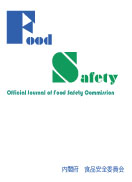
- 4 号 p. 113-
- 3 号 p. 73-
- 2 号 p. 43-
- 1 号 p. 1-
- |<
- <
- 1
- >
- >|
-
Hiromi Nabeshi, Masataka Imamura, Tomoaki Tsutsumi, Tomomi Maeda, Akik ...2022 年 10 巻 1 号 p. 1-12
発行日: 2022年
公開日: 2022/03/25
[早期公開] 公開日: 2022/03/08ジャーナル オープンアクセス HTMLWe investigated the concentration of radioactive cesium (r-Cs: 134Cs and 137Cs) in commercially-available foods to confirm the effectiveness of pre-shipment radioactive material inspections mainly conducted by local governments. We focused on selected production areas and foods with high probability of r-Cs detection. To this end, we evaluated 715, 685, and 683 samples using scintillation spectrometer and high-purity germanium γ-spectrometer in fiscal years 2017, 2018, and 2019, respectively. The results accounted for 9 samples (1.3%), 10 samples (1.5%), and 5 samples (0.7%) for each fiscal year exceeded the standard limit of radioactive material (100 Bq/kg as r-Cs concentration for general foods). Although we selected and evaluated foods with high probability of r-Cs detection, percentage of samples exceeding the standard limit in each fiscal year was very low, less than 2% to be exact. This suggests that food management system, including pre-shipment inspections, were effectively functioning. In addition, samples exceeding the standard limit were bound to edible wild plants and wild mushrooms, and log-cultivated mushrooms. The former is consider to be difficult for cultivation/feeding control, and the latter was know to be parts of foods greatly affected by radioactive materials. This suggests that the concentration of r-Cs in these items remains at relatively high levels. In contrast, r-Cs was not detected in items with controalble cultivation/feeding. Based on these observations, it is better to be inspected on more difficult-to-cotrol cultivation/feeding items, in order to achieve further streamlining and improving of inspection efficiency. Our results indicate that r-Cs concentration in commercially-available foods of easy-to cultivation/feeding control, such as general vegetables, fruits, and meat, have been well-controlled in Japan, however, difficult-to-cultivation/feeding control items need to be more paid attention to r-Cs concentrations.
抄録全体を表示PDF形式でダウンロード (1738K) HTML形式で全画面表示 -
Hiroaki Kodama, Yukiko Umeyama, Taira Miyahara, Taichi Oguchi, Takashi ...2022 年 10 巻 1 号 p. 13-31
発行日: 2022年
公開日: 2022/03/25
[早期公開] 公開日: 2022/03/04ジャーナル オープンアクセス HTMLGrafting of commercial varieties onto transgenic stress-tolerant rootstocks is attractive approach, because fruit from the non-transgenic plant body does not contain foreign genes. RNA silencing can modulate gene expression and protect host plants from viruses and insects, and small RNAs (sRNAs), key molecules of RNA silencing, can move systemically. Here, to evaluate the safety of foods obtained from sRNA-recipient plant bodies, we investigated the effects of rootstock-derived sRNAs involved in mediating RNA-directed DNA methylation (RdDM) on non-transgenic scions. We used tobacco rootstocks showing RdDM against the cauliflower mosaic virus (CaMV) 35S promoter. When scions harboring CaMV 35S promoter sequence were grafted onto RdDM-inducing rootstocks, we found that RdDM-inducing sRNAs were only weakly transported from the rootstocks to the scion, and we observed a low level of DNA methylation of the CaMV 35S promoter in the scion. Next, wild-type (WT) tobacco scions were grafted onto RdDM-inducing rootstocks (designated NT) or WT rootstocks (designated NN), and scion leaves were subjected to multi-omics analyses. Our transcriptomic analysis detected 55 differentially expressed genes between the NT and NN samples. A principal component analysis of proteome profiles showed no significant differences. In the positive and negative modes of LC-ESI-MS and GC-EI-MS analyses, we found a large overlap between the metabolomic clusters of the NT and NN samples. In contrast, the negative mode of a LC-ESI-MS analysis showed separation of clusters of NT and NN metabolites, and we detected 6 peak groups that significantly differed. In conclusion, we found that grafting onto RdDM-inducing rootstocks caused a low-level transmission of sRNAs, resulting in limited DNA methylation in the scion. However, the causal relationships between sRNA transmission and the very slight changes in the transcriptomic and metabolomic profiles of the scions remains unclear. The safety assessment points for grafting with RdDM rootstocks are discussed.
抄録全体を表示PDF形式でダウンロード (4485K) HTML形式で全画面表示 -
Yumika Kashiwabuchi, Yuki Nishimura, Norimitsu Kurata, Mariko Iwase, Y ...2022 年 10 巻 1 号 p. 32-41
発行日: 2022年
公開日: 2022/03/25
[早期公開] 公開日: 2022/03/03ジャーナル オープンアクセス HTMLKaempferia parviflora (KP) extract has recently attracted attention in Japan as a dietary supplement; however, there is little information regarding food-drug interactions (FDIs). The current study was conducted to clarify the FDI of KP extract via inhibition of cytochrome P450 3A (CYP3A), a typical drug-metabolizing enzyme. The inhibitory effects of KP extract and its main ingredients, 5,7-dimethoxyflavone (5,7-DMF) and 3,5,7,3’,4’-pentamethoxyflavone (3,5,7,3’,4’-PMF), on CYP3A-mediated midazolam 1’-hydroxylation (MDZ 1’-OH) activity were investigated in human liver microsomes. In addition, the effect of a single oral treatment with KP extract (135 mg/kg) on oral MDZ (15 mg/kg) metabolism was investigated in rats. Serum MDZ concentration was analyzed and pharmacokinetic parameters were compared with the control group. KP extract competitively inhibited MDZ 1’-OH activity with an inhibition constant value of 78.14 µg/ml, which was lower than the estimated concentration in the small intestine after ingestion. Furthermore, KP extract, 5,7-DMF, and 3,5,7,3’,4’-PMF inhibited the activity in a time-, NADPH-, and concentration-dependent manner. In vivo study showed that administration of KP extract to rats 2 h before MDZ significantly increased the area under the serum concentration-time curve and the maximum concentration of MDZ significantly by 2.3- and 1.9- fold, respectively (p < 0.05). Conversely, administration of MDZ 18 h after KP extract treatment displayed a weaker effect. These results suggest that KP extract competitively inhibits CYP3A-mediated MDZ metabolism, and that this inhibition may be time-dependent but not irreversible. This work suggests an FDI through CYP3A inhibition by KP extract.
抄録全体を表示PDF形式でダウンロード (1174K) HTML形式で全画面表示
- |<
- <
- 1
- >
- >|